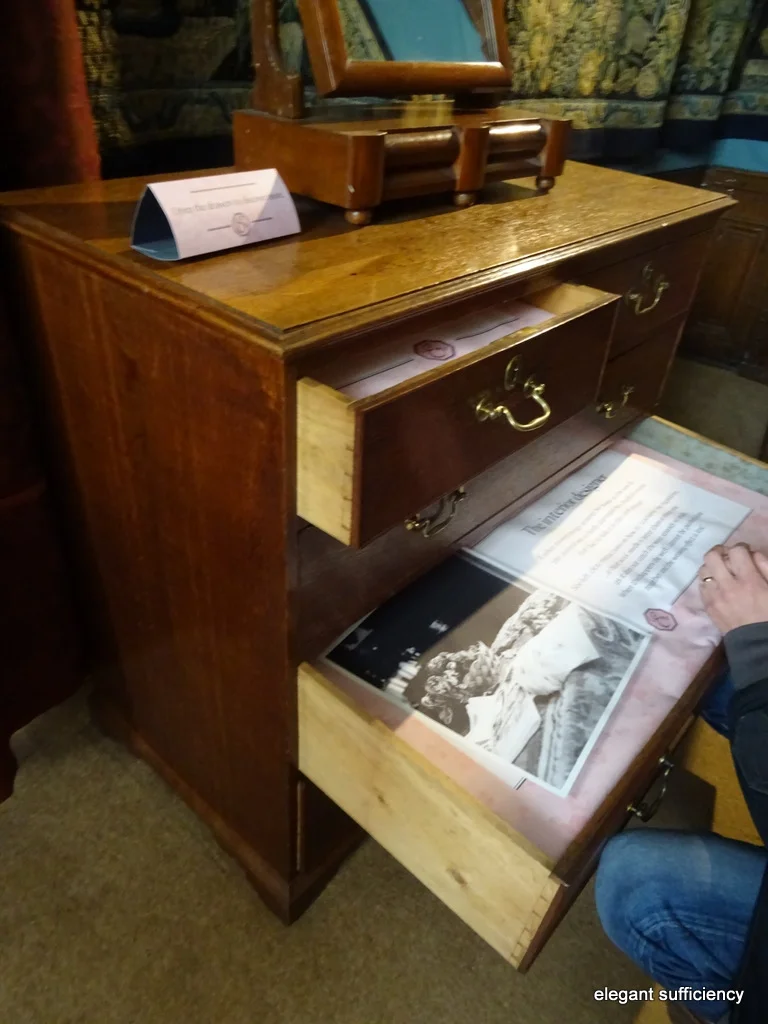"Rouse ye Women"
I love the little coincidences in life; those fortuitous little moments when the pieces just fall into place without any plan or design. Today was a great example of such serendipity, when we took ourselves out for the day and went to the Black Country Museum, a place that’s been on our list for quite some time.
We arrived shortly after it opened, thinking that we’d enjoy a quiet, pre-half term weekday but as anyone who has visited such a place during the school term will know, we should have considered all the school groups who were likely to be there.
Though it all looked pretty quiet from the outside, each time we went to step into one of the buildings to take a look, we found it crammed with youngsters. No problem with that at all - in fact, they are exactly the people who should be here, learning about how it was in the “old days” (much of it familiar to us in scenes from our childhood!) But it was somewhat frustrating too and we’ll know that it’s better to come in the afternoon in the future. A lesson learned.
So we did our best and stayed ahead of/behind the pack, popping into any empty shop or parlour, enjoying a chat with whoever was inside and learning a great deal about life in 1910 or thereabouts.
We had quite a lengthy conversation with the shopkeeper in Gregory’s General Store, who explained the benefits of shopping here in favour of the specialist grocer’s, hardware store and draper’s along the street. Prices here were keen, said he, and for those on a tight budget he would split open a packet of tea and sell a farthing’s worth in a twist of paper. A shrewd businessman then, forging relationships with the community to boost his trade.
It was he who introduced us to groats, generally used to make the Black Country speciality “groaty dick” - a new one to us!
We spent a happy time popping into shops and houses, remembering when hardware shops looked a bit like this - I know, I wasn’t around in 1910 (and neither was my hero!) but there were still remnants of these places in the 1950s and 60s and in Hull, Starkeys Ironmongers was the place to go for such things on Beverley Road, without doubt. Just one thing was missing from this reconstruction: the smell of paraffin!
We added to our vocabulary as we gazed around the shelves. This small shop probably had as wide a range of specialist materials as the B&Q down the road and there was not an empty corner in the place.
Love it.
The Chapel was empty at this time of the day, though the wonky harmonium was playing as we wandered around.
The person who rents the front dwelling of the “back to back” house on the street had just popped out. Her neighbour explained that she and her husband had things a little easier than the family who rented the other half of the house, what with them having five children and all, in just two rooms.
The two chaps on the boats in the dock were focused on keeping warm, struggling as they were to get their fires lit on this chilly morning. Their Black Country accents were wonderful, though whether the group of French students who arrived whilst we were chatting could make sense of it, who knows?
A little further on, we were into the 1930s and the paint and wallpaper shop stocked a few more familiar products.
I’m sure that was Daddy’s brown canvas toolbag there on the floor, too - complete with his box plane which now sits on the windowsill in my studio. It was all of these details that made it so fascinating - now we understood why everyone loves this museum!
Having enjoyed a great fish and chip lunch across the way and in search of a cup of tea, we headed for the Workers Institute, an Arts and Crafts style building where there was a café and some exhibits. This building, like most of them in the museum, had been moved from its original site - in this case Cradley Heath - and reconstructed here in Dudley.
Now, Cradley Heath. That name was familiar, because we’ve been watching Michael Portillo’s Railway Journeys and the night before last, he was in Cradley Heath! Not only that, but he told a fascinating story of the industrial heritage of the town, which specialised in heavy chain making - a long and laborious process, as he demonstrated in the feature. The part of the story that captivated both of us the other night, however, concerned the women chain makers. They made smaller, lighter chains, usually working in small, hot forges at home, and their wages were worked out on the same basis as the men - ie by weight of chain they produced, in spite of the vast difference of work involved . This meant that the women earned “little more than starvation wages” and their situation attracted the attention of the trades unionist and suffragist Mary Macarthur who campaigned for their cause and led them to victory following a strike in 1910.
So, stepping inside the building to see an exhibition about the Women Chainmakers caused us both to do a double take. I remembered hearing Michael Portillo highlight the phrase "the women are unorganised because they are badly paid, and poorly paid because they are unorganised" in the programme - and here it was again, with a portrait of Mary Macarthur and a detailed story of the whole event.
There’s all the detail in an online exhibition here, too. Who knew? (not us, I’ll admit)
So here we were, standing in the Workers Institute, reading about the events of 1910 and how the “Construction of the Institute was funded using money left over from the strike fund of the 1910 women chainmakers' strike”
Oh my.
Definitely time for a cup of tea - in the hall of the institute, beneath this beautiful banner.
A poster pinned to the noticeboard nearby suggested that achieving gender equality might take some time, though.
We were now working our way back towards the entrance, having enjoyed a few hours here and feeling that this had been a great recce - we’d be back before long, for sure. There remained one building which we wanted to see, before it’s moved in the next couple of months - the Cast Iron houses. We had a fun conversation with a gentleman sitting by the fire in there. Just like all the other “characters” around and about, he was knowledgeable and very chatty, explaining all about the idiosyncrasies of these unusual houses and how they came to be.
Home then, to my desk to spend an hour or so reviewing my photographs and sharing the story of a particularly fascinating day. Two days ago, I’d not even heard of Cradely Heath and given the business of making a chain no thought whatsoever.
Who’d have guessed?































